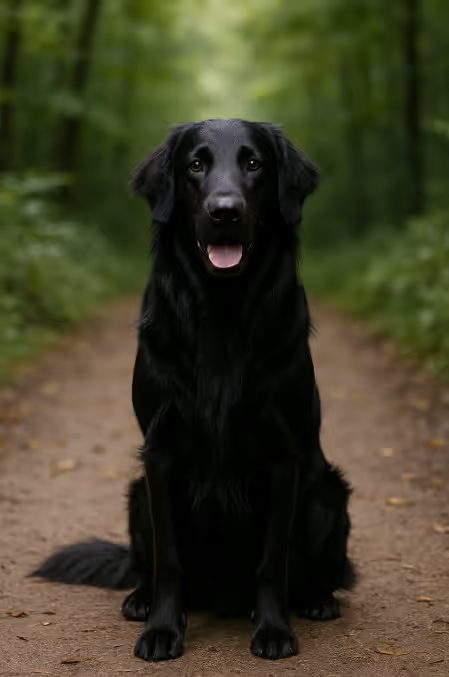The Flat-Coated Retriever is a joyful, energetic, and sociable breed known for its perpetual puppy-like spirit. Often referred to as the “Peter Pan” of the dog world, this gundog is ideal for active families and outdoor enthusiasts. With their glossy coats and ever-wagging tails, Flat-Coats thrive in homes that can provide plenty of exercise, attention, and mental stimulation.

Originating in 19th-century England, the Flat-Coated Retriever was developed from a mix of Setters, Spaniels, and the now-extinct St. John's Water Dog. These retrievers were popular among hunters for their versatile retrieving abilities on land and water. They were once the most popular retriever in Britain, until the Labrador and Golden Retrievers gained dominance. Today, they are cherished for their working abilities and exuberant personality.
Elegant, athletic retriever with a distinctive long head and feathered coat.
Low to moderate grooming needs, but regular brushing helps manage shedding and keeps the coat sleek.
Flat-Coated Retrievers are highly energetic and need ample exercise to prevent boredom.
Smart and eager to please, Flat-Coats are easy to train but may get bored with repetition.
A high-quality, balanced diet supports this breed’s energy and long-term health.
Flat-Coated Retrievers are prone to certain serious health conditions and have a shorter-than-average lifespan.
Due to their rarity, finding a reputable Flat-Coated Retriever breeder is essential.
Are Flat-Coated Retrievers good family dogs?
Yes. They are affectionate, playful, and typically very good with children.
Do Flat-Coats shed a lot?
Moderately. Regular brushing helps reduce loose hair and seasonal shedding.
Are Flat-Coated Retrievers hypoallergenic?
No. They are not suitable for allergy sufferers.
How much exercise does a Flat-Coated Retriever need?
At least 60–90 minutes daily of active play, walks, and mental stimulation.
Do Flat-Coats get along with other pets?
Yes, they’re generally sociable with other dogs and animals when socialized early.
Are Flat-Coats easy to train?
Yes, though their playful nature means they need variety to stay engaged.
How long do Flat-Coated Retrievers live?
Sadly, their average lifespan is 8–10 years due to a high risk of cancer.
Do Flat-Coated Retrievers bark a lot?
No, they are not excessive barkers but will alert you to visitors.